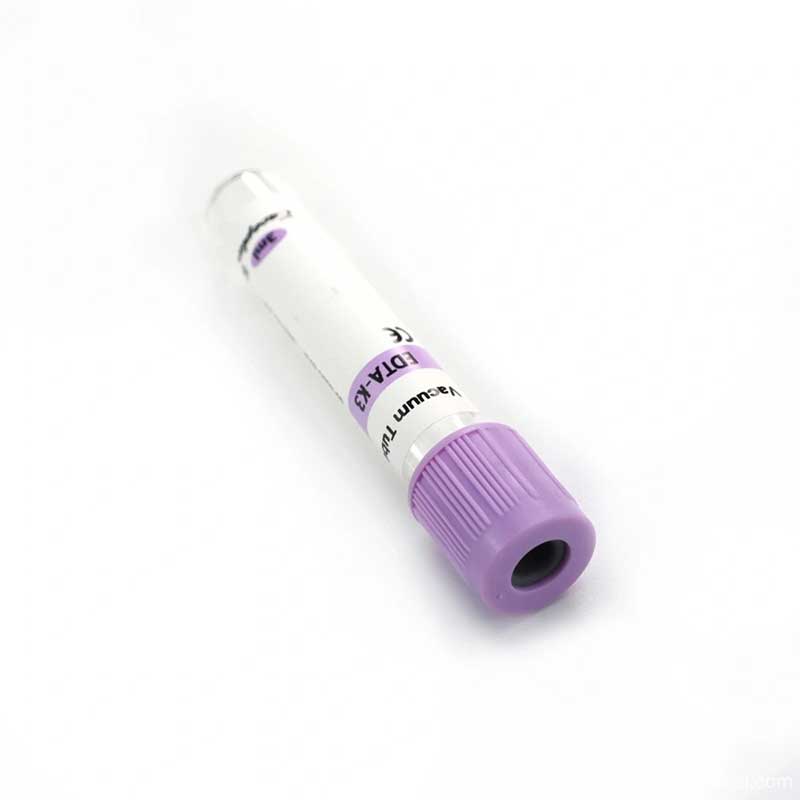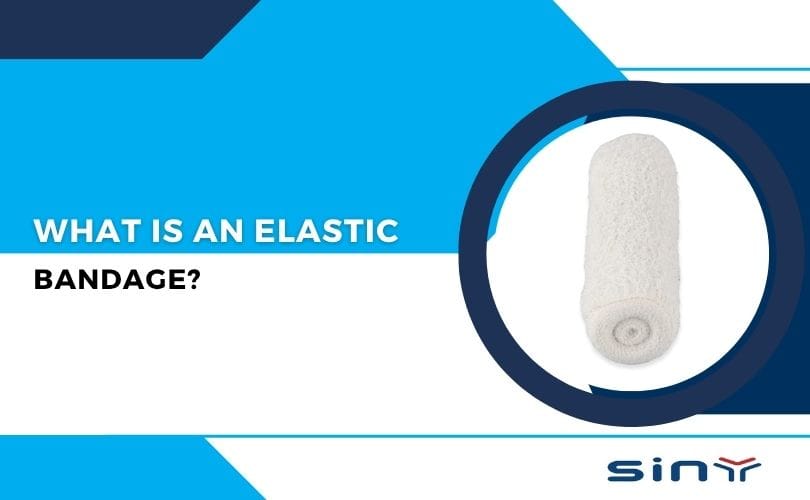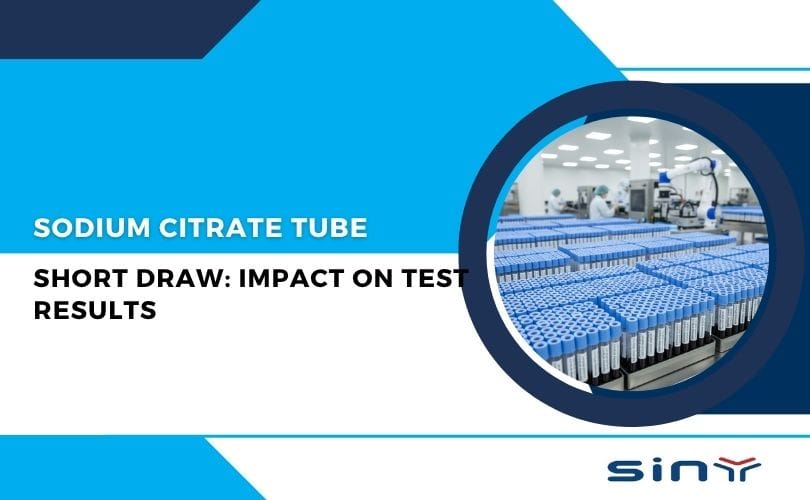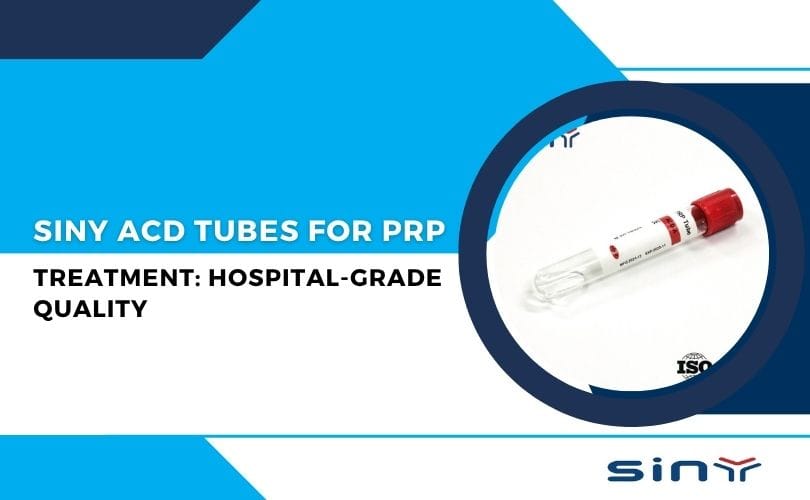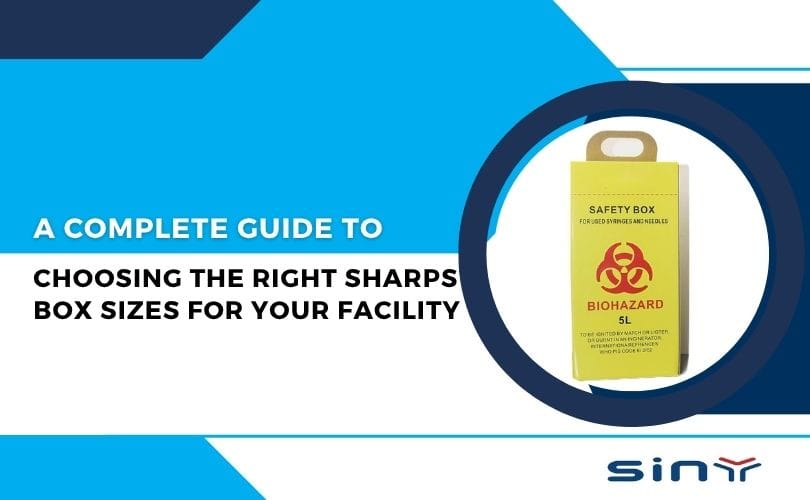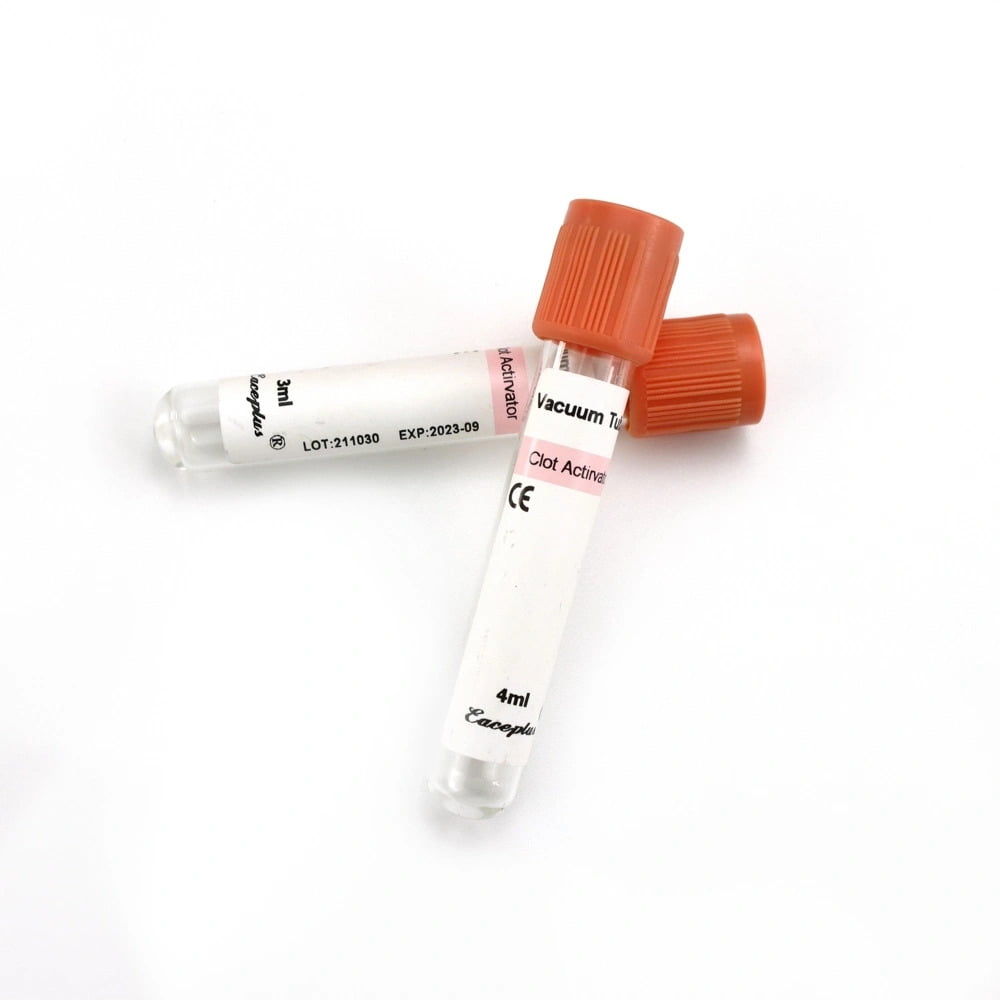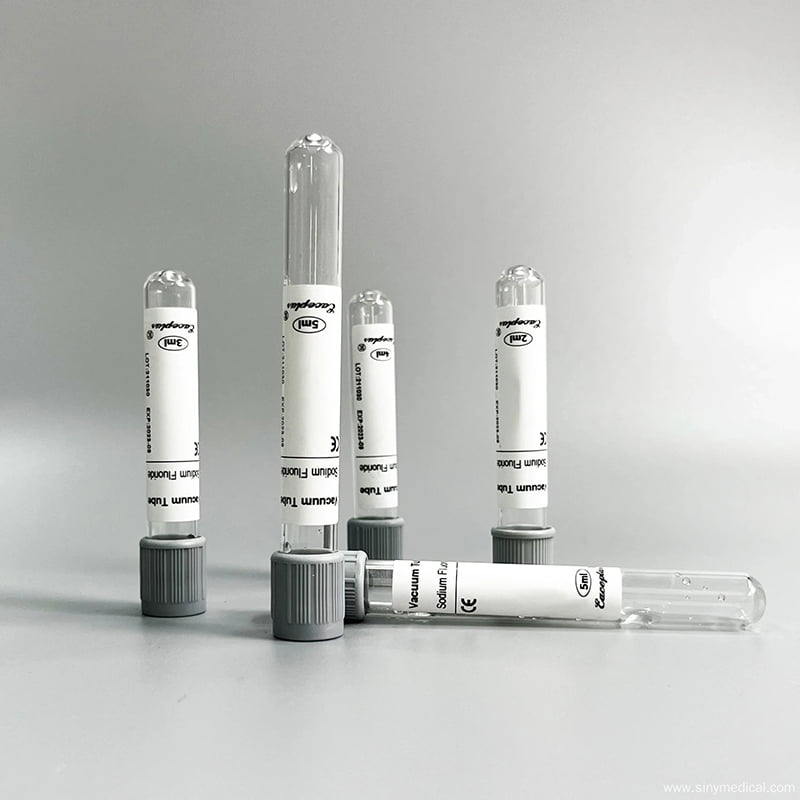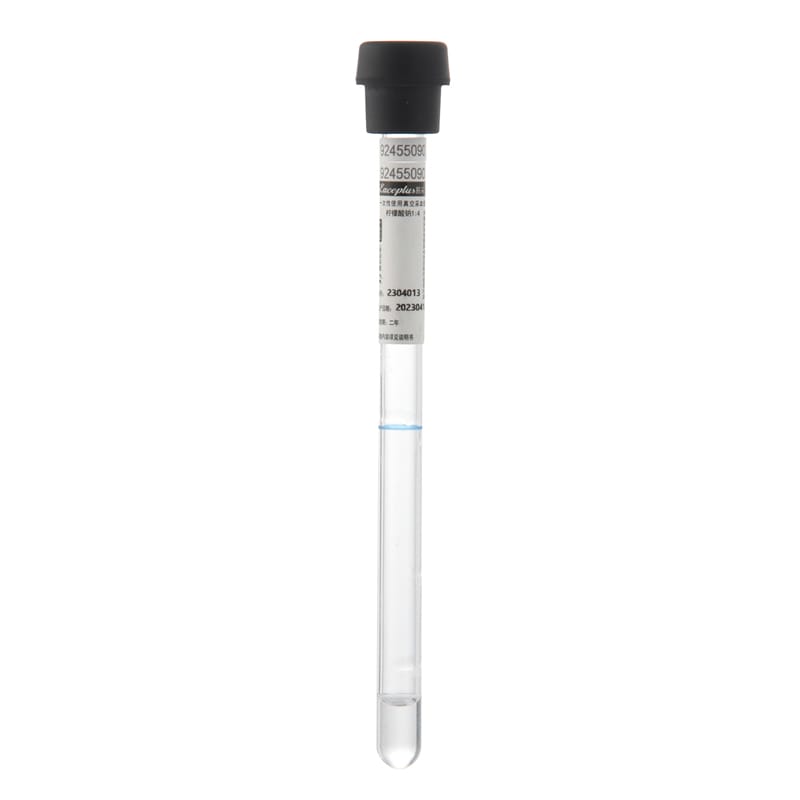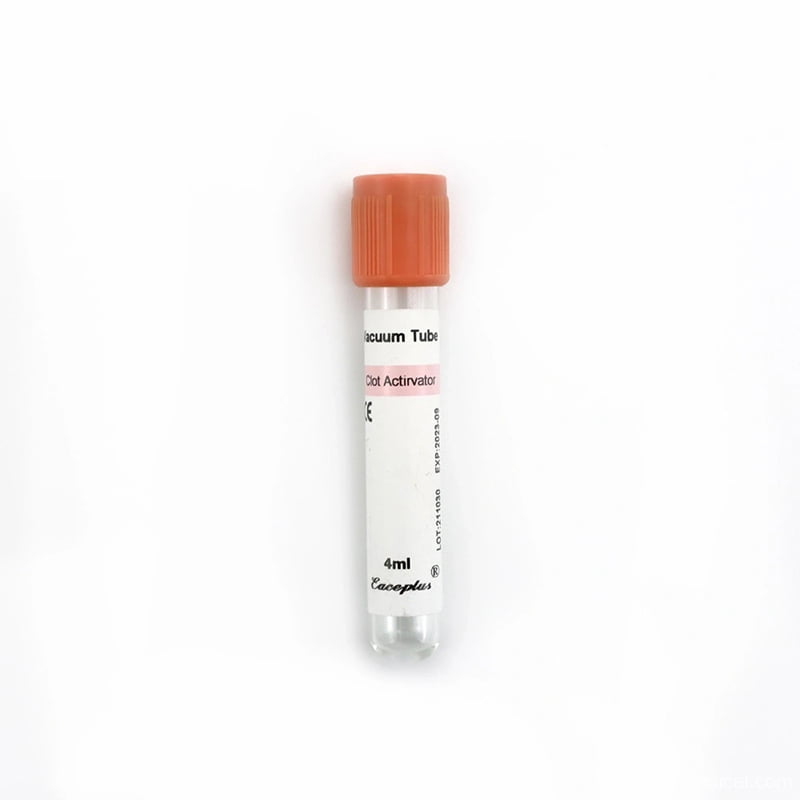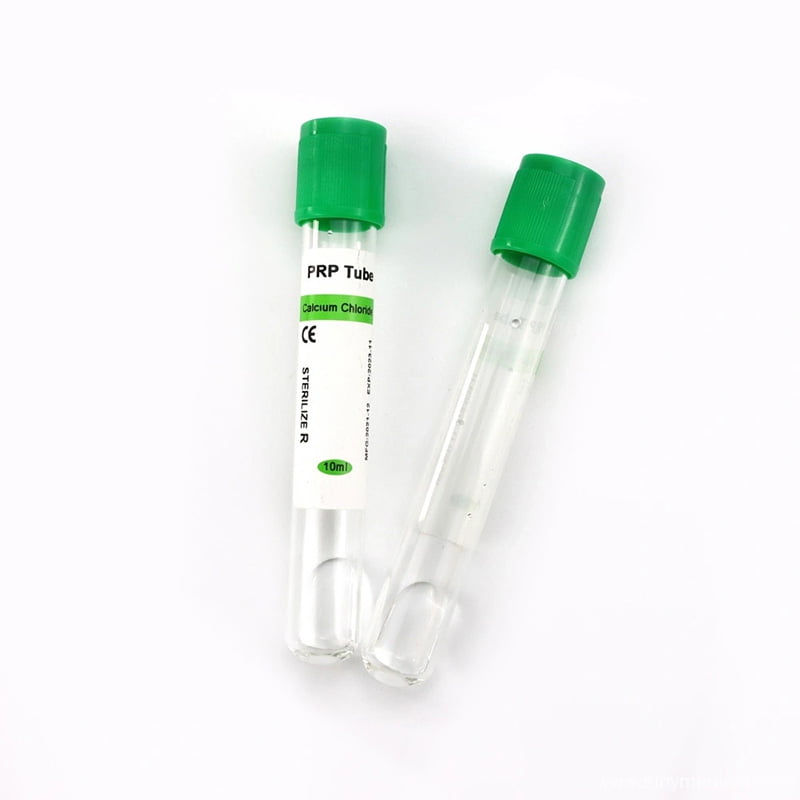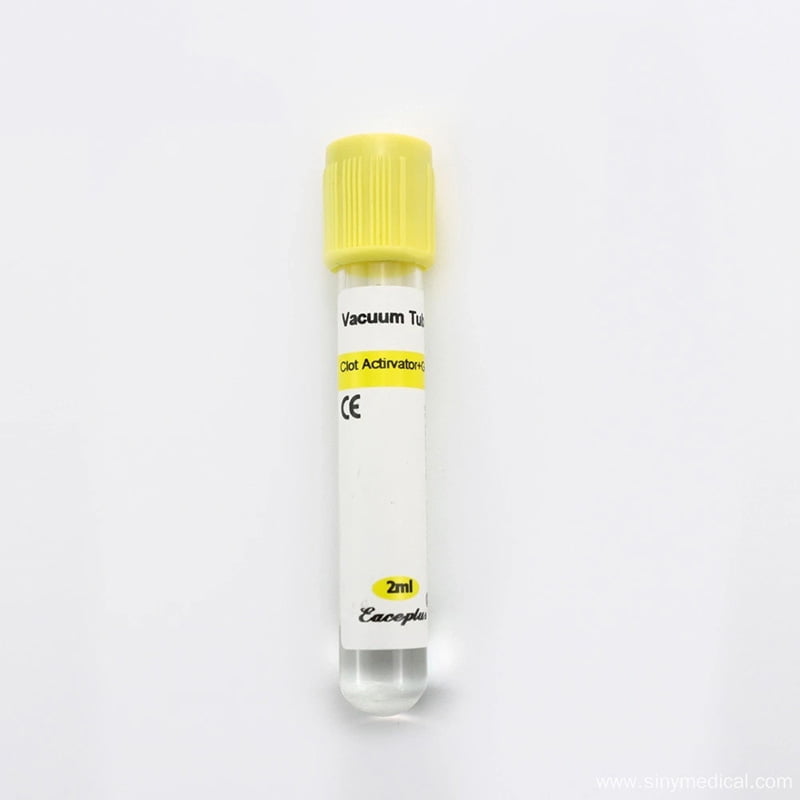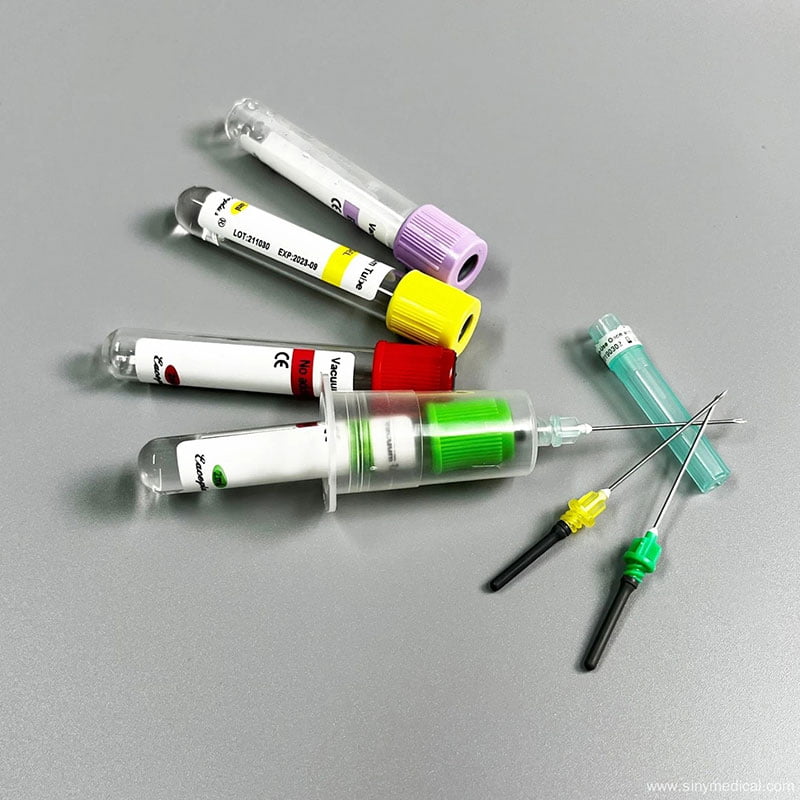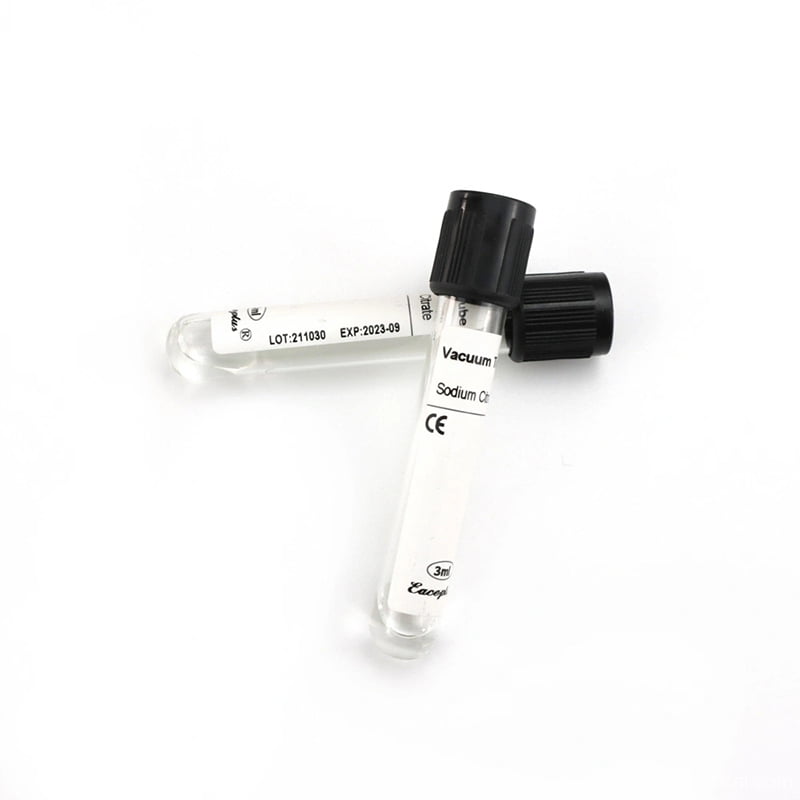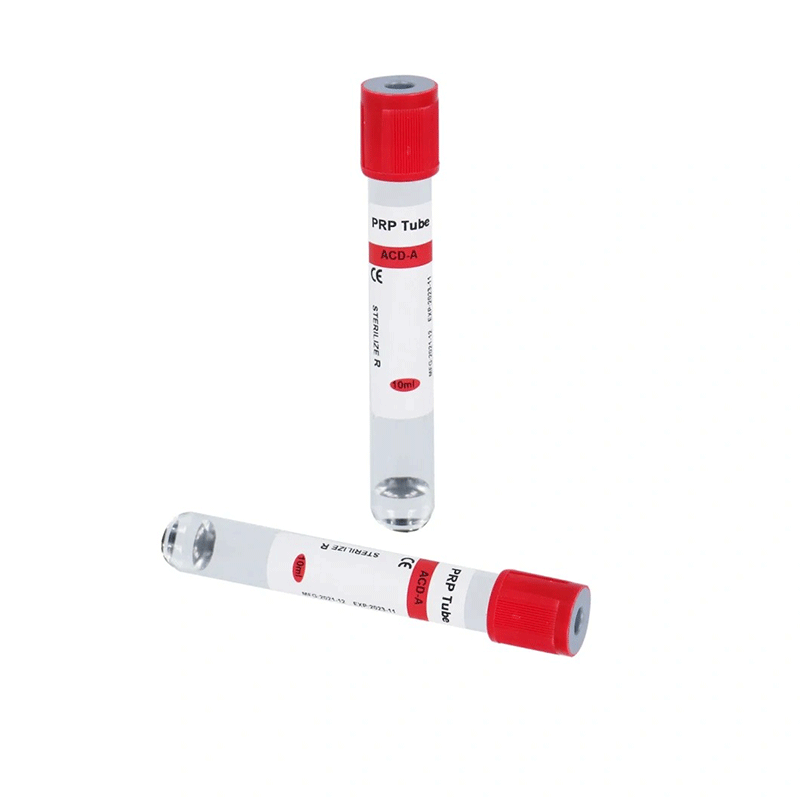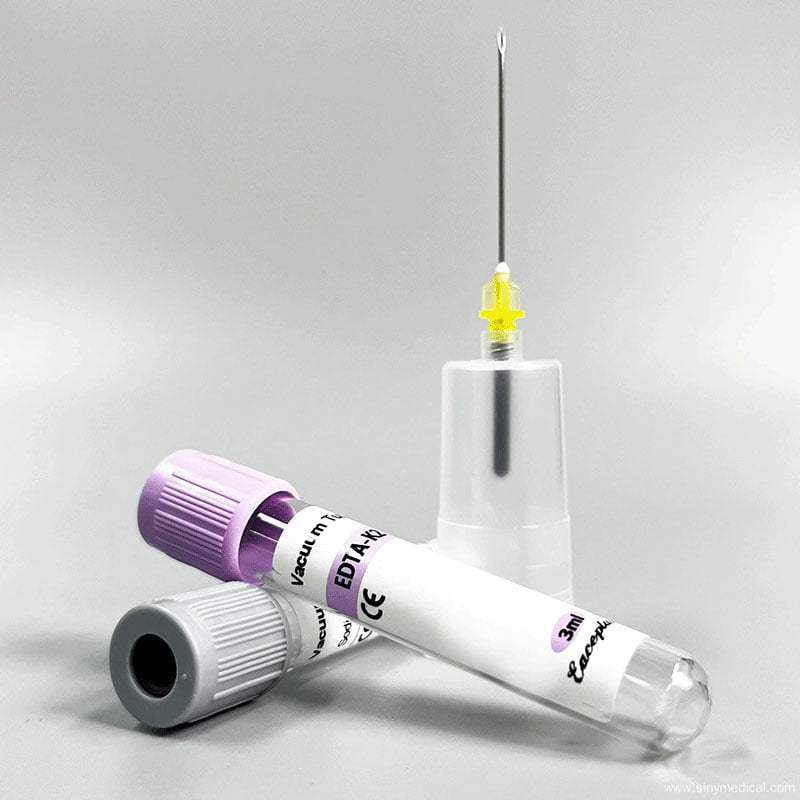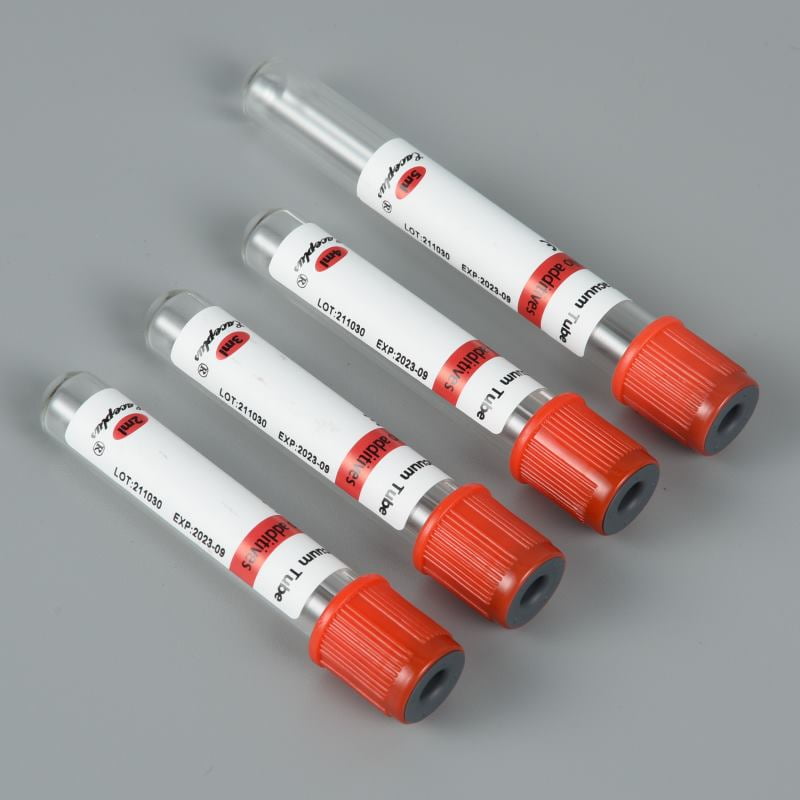Platelet-Rich Plasma (PRP) therapy has exploded in popularity across aesthetic medicine, orthopedics, dentistry, sports medicine, and wellness treatments. But while most discussions focus on centrifuges or PRP protocols, there’s one hidden factor that significantly influences PRP quality: the blood collection tube itself.
Believe it or not, the tube you choose—its material, additive, anticoagulant, gel separator, sterility level, and PRP yield—can make or break the entire PRP process. A poor-quality tube leads to low platelet concentration, contamination risks, clotting instability, or even inaccurate clinical results.
In this research-driven guide, we break down the Best Blood Collection Tubes for PRP, including how they work, what to look for, which materials perform best, and why healthcare providers worldwide rely on companies like Siny Medical for dependable PRP tube manufacturing.
Table of Contents
- 1 What Are Blood Collection Tubes for PRP?
- 2 What Makes a Blood Collection Tube the Best for PRP Therapy?
- 3 What Makes Blood Collection Tubes Suitable for PRP Preparation
- 4 Types of Blood Collection Tubes Used in PRP Therapy
- 5 Comparison Table: Types of PRP Tubes and Their Clinical Use
- 6 Why Siny Medical Produces Some of the Best Blood Collection Tubes for PRP
- 7 How to Choose the Best Blood Collection Tube for PRP Procedures
- 8 How PRP Tube Quality Impacts Treatment Results
- 9 Summary
- 10 FAQs
- 10.1 1. Which additives are best for PRP tubes?
- 10.2 2. Are gel separator tubes good for PRP?
- 10.3 3. Can any blood tube work for PRP?
- 10.4 4. Are Siny Medical PRP tubes certified?
- 10.5 5. How can I order PRP tubes in bulk?
- 10.6 6. Do PRP tubes expire?
- 10.7 7. Can ACD-A produce higher PRP concentration?
- 10.8 8. Are PET tubes safe for centrifugation?
- 10.9 9. What size PRP tubes are most popular?
- 10.10 10. Should PRF tubes contain additives?
What Are Blood Collection Tubes for PRP?
Blood collection tubes for PRP are specialized containers designed to collect and process blood samples efficiently. These tubes are equipped with anticoagulants and gel separators to facilitate the separation of platelets and plasma from other blood components. The quality of these tubes directly impacts the concentration and viability of platelets, making them a cornerstone of PRP therapy.

For a deeper understanding of how these tubes work, check out our detailed guide on how vacuum blood collection tubes are manufactured.
What Makes a Blood Collection Tube the Best for PRP Therapy?
When evaluating the best blood collection tubes for PRP, several factors influence performance:
1. Tube Material
The most common materials are:
- PET plastic – lightweight, cost-effective, stable vacuum
- Glass – more chemically inert but breakable
- Medical-grade polymer composites – used in premium PRP tubes
For PRP, PET tubes and polymer composite tubes are preferred because they maintain internal vacuum stability and are safer during centrifugation.
2. Additive Type
Additives affect platelet activation and separation.
Common additives include:
- Sodium Citrate (3.2%–3.8%) – prevents clotting, widely used in PRP
- ACD-A – preserves platelets and enhances viability
- Gel Separator – helps isolate plasma and buffy coat
- No Additive (Dry Tube) – for serum-based PRP types
Choosing the wrong additive can drastically impact PRP yield.
Learn more about how additives are used in advanced tubes at
Siny Medical Serum Tubes.
3. Sterility and Vacuum Accuracy
High-quality PRP tubes must be:
- Sterile (γ-ray sterilized preferred)
- Pyrogen-free
- Vacuum-precise
- Free from endotoxins and impurities
This ensures platelet integrity and eliminates contamination risks.
4. PRP Yield and Concentration
A great PRP tube should deliver:
- High platelet recovery rate
- Stable buffy coat layer
- No excessive RBC contamination
- Consistent PRP and PPP separation
5. Biocompatibility
All materials in the tube must be biocompatible and safe for reinjection.
6. Certificate and Manufacturing Quality
Trusted PRP tubes must meet:
- ISO standards
- CE certification
- GMP manufacturing standards
Siny Medical provides excellent transparency on its manufacturing quality and processes here:
How to Manufacture Vacuum Blood Collection Tubes.
What Makes Blood Collection Tubes Suitable for PRP Preparation
Not all blood collection tubes are created equal, and standard tubes designed for diagnostic testing may not perform optimally for PRP preparation. Understanding the specific requirements for PRP blood collection tubes helps practitioners make informed decisions when establishing or upgrading their treatment protocols.
Anticoagulant selection represents the most critical factor in PRP tube design. The anticoagulant must prevent blood clotting while preserving platelet function and viability.
Tube material composition affects both the sterility and biocompatibility of the collection system. Medical-grade plastics such as polyethylene terephthalate (PET) are commonly used because they provide excellent clarity for visual inspection, resist breakage during centrifugation, and maintain sterility throughout the shelf life. High-quality blood collection tubes manufactured with pharmaceutical-grade materials minimize the risk of contamination and ensure consistent performance.
Vacuum pressure standardization ensures accurate blood draw volumes, which is essential for maintaining proper blood-to-anticoagulant ratios. Insufficient vacuum may result in underfilling, leading to incorrect anticoagulant concentrations that can cause partial clotting. Reputable manufacturers like Siny Medical implement rigorous quality control measures to ensure vacuum consistency across production batches.
Separation gel technology in some PRP tubes creates a physical barrier between different blood components after centrifugation. Advanced thixotropic gels flow during spinning to position themselves between the plasma layer and cellular components, facilitating clean PRP extraction.
Tube capacity and size must accommodate the volume requirements of different PRP protocols. Common sizes range from 4ml to 10ml, with 8ml and 10ml tubes being most popular for facial aesthetic treatments and 15ml or larger tubes preferred for orthopedic applications requiring greater PRP volumes.
Types of Blood Collection Tubes Used in PRP Therapy
Below are the most common types used in PRP procedures.
Citrate PRP Tubes (Sodium Citrate Tubes)
These are the most widely used PRP tubes.
Why?
Citrate stabilizes blood pH and prevents clotting without activating platelets prematurely.
Benefits:
- High platelet recovery
- Stable buffy coat
- Low cost
Where to find them:
Browse citrate tubes here : Blood Collection Tubes – Siny Medical
PRP Gel Separator Tubes
These include a thixotropic gel layer that physically separates PRP from RBCs upon centrifugation.
Best for:
Aesthetic medicine, anti-aging, microneedling, and hair restoration.
Benefits:
- Cleaner PRP
- Faster workflow
- Less RBC contamination
See professional PRP tube options here: Siny Medical PRP Tubes
ACD-A PRP Tubes (Premium-Grade)
ACD-A (Acid Citrate Dextrose, Solution A) is superior for preserving platelet morphology.
Advantages:
- Best for orthopedics
- Higher clinical efficacy
- Great platelet viability
ACD-A tubes are considered among the best blood collection tubes for PRP.
Serum PRP Tubes (No Additive Tubes)
These are used for specific PRF/PRP hybrid procedures.
Benefits:
- No anticoagulants
- Supports natural fibrin formation
Explore no-additive serum tubes at: Siny Medical Serum Tube Collection.
Comparison Table: Types of PRP Tubes and Their Clinical Use
| Tube Type | Additive | Best For | Pros | Cons |
|---|---|---|---|---|
| Citrate PRP Tube | Sodium Citrate | Aesthetic / General PRP | High platelet recovery | May require double-spin protocol |
| Gel Separator PRP Tube | Citrate + Gel | Facial PRP / Hair PRP | Cleaner separation | Not suitable for all centrifuges |
| ACD-A PRP Tube | ACD-A | Ortho / Advanced PRP | Excellent platelet viability | Higher cost |
| Serum Tube | None | PRF / PRP-F | Natural fibrin structure | Time-sensitive handling |
Why Siny Medical Produces Some of the Best Blood Collection Tubes for PRP
If you’re searching for high-quality, consistent, and clinically reliable PRP tubes, Siny Medical is one of the leading global manufacturers.
Here’s why:
Advanced Manufacturing Standards
Their facility meets:
- ISO
- CE
- GMP
Learn about their manufacturing process here: How Vacuum Blood Collection Tubes Are Manufactured
Huge Selection of PRP-Specific Tubes
They offer:
- Citrate PRP tubes
- PRP gel tubes
- ACD-A PRP tubes
- Serum tubes
Check full range: PRP Tube Collection at Siny Medical
Trusted by Clinics Worldwide
Siny’s global presence includes distribution through:
Made-in-China and educational content on
YouTube.
Custom OEM / ODM PRP Tube Manufacturing
Clinics can design:
- Custom additives
- Branding
- Packaging
- PRP volume variations
Contact them here: Siny Medical Contact Page.
How to Choose the Best Blood Collection Tube for PRP Procedures
Consider Your PRP Protocol
Single-spin? Double-spin? PRF? Advanced platelet concentration?
Your protocol determines the tube type you need.
Choose the Correct Additive
For traditional PRP, Citrate or ACD-A are best.
Make Sure the Tube Is Centrifuge-Compatible
Not all tubes fit all centrifuges.
Check PRP Yield Data
Higher platelet concentration = better clinical outcomes.
Look for Certifications
ISO, CE, and GMP certifications guarantee safety.
How PRP Tube Quality Impacts Treatment Results
High-quality PRP tubes improve:
- Platelet concentration
- Platelet functionality
- Plasma purity
- Growth factor output
- Patient results
Poor-quality tubes cause:
- Low PRP yield
- RBC contamination
- Platelet degradation
- Inconsistent results
This is why choosing the best blood collection tubes for PRP is crucial for any clinic.
Summary
Choosing the best blood collection tubes for PRP is a critical step in ensuring the success of your therapy. From anticoagulant type to tube material, every detail matters. At Siny Medical, we offer a wide range of high-quality tubes designed to meet the needs of medical professionals and patients alike.
Whether you’re new to PRP therapy or looking to upgrade your equipment, our PRP tubes and serum tubes are here to support your journey towards better health and wellness.
For more insights and products, explore our blood collection tubes category today.
FAQs
1. Which additives are best for PRP tubes?
Sodium Citrate (3.8%) and ACD-A are the top choices for stable PRP.
2. Are gel separator tubes good for PRP?
Yes—especially for aesthetic PRP—but not ideal for all orthopedic protocols.
3. Can any blood tube work for PRP?
No. PRP requires specific additives and medical-grade manufacturing.
4. Are Siny Medical PRP tubes certified?
Yes, they follow ISO, CE, and GMP standards.
5. How can I order PRP tubes in bulk?
Through Siny Medical: Contact Siny Medical
6. Do PRP tubes expire?
Yes—check the sterilization and expiration date before use.
7. Can ACD-A produce higher PRP concentration?
Often, yes. It preserves platelets extremely well.
8. Are PET tubes safe for centrifugation?
High-quality PET tubes (like Siny Medical’s) are fully centrifuge-safe.
9. What size PRP tubes are most popular?
8 mL–12 mL tubes are standard.
10. Should PRF tubes contain additives?
No—PRF requires no additive serum tubes.

